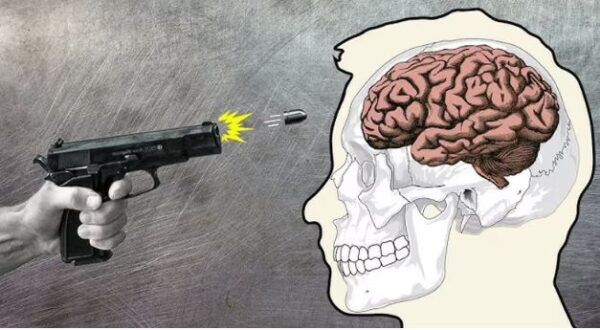Lifestyle
What really happens to the human body after getting shot

When you think about getting shot, it’s easy to picture the dramatic scenes from movies where people are either instantly fine or tragically fall down, never to move again.
But, the reality of what happens to the human body after being shot is much more complex and terrifying.
A gunshot wound isn’t just a hole in the body. When a bullet enters the body, it creates a path of destruction, damaging tissues, organs, and bones in its way. The extent of the damage depends on several factors, including the type of bullet, where it hits, and how fast it’s travelling.
Gunshot wounds can lead to immediate and long-term effects on both the body and mind, making survival a painful experience. Let’s shed more light on what really happens when someone is shot:
The immediate impact
When a bullet enters the body, it doesn’t travel in a straight line. Instead, it can tumble, yaw, or even fragment, creating a path of destruction that’s far worse than the small entry wound might suggest.
High-velocity bullets, like those from rifles, can cause even more catastrophic damage. They create a shockwave as they travel through the body, which can result in tissue being torn apart or organs being shattered, even if they’re not directly hit by the bullet itself.
For instance, a bullet that hits the abdomen can cause damage to multiple organs, leading to severe internal bleeding. Most deaths from gunshot wounds are due to blood loss. If the bleeding isn’t controlled quickly, vital organs like the heart, liver, or lungs can fail, leading to death within minutes to hours.
The medical response
When a gunshot victim arrives at a trauma centre, time is of the essence. Doctors work rapidly to assess the damage, often needing to perform emergency surgery to stop the bleeding and repair damaged organs.
This can involve removing parts of organs, tying off blood vessels, or even removing shattered bone fragments. For more severe injuries, especially those caused by high-velocity weapons, doctors may have to perform complex procedures like thoracotomies, where they open the chest to manually massage the heart and repair damaged arteries.
In many cases, the medical team’s goal is simply to stabilise the patient long enough to perform more definitive surgery later on. Even with the best medical care, the road to recovery is long and painful, often involving multiple surgeries and a high risk of complications like infections.
Long-term consequences
Surviving a gunshot wound is just the beginning of a long journey. Physically, survivors might deal with chronic pain, loss of mobility, or the need for prosthetics if limbs are severely damaged or amputated.
The psychological impact can be just as severe. Survivors can experience post-traumatic stress disorder (PTSD), anxiety, and depression.
The sound of fireworks or the sight of a gun can trigger intense fear or panic attacks, making everyday life challenging.
Also, the financial cost of surviving a gunshot wound can be overwhelming. Medical bills, rehabilitation, and the need for long-term care can place a tremendous burden on survivors and their families.
Getting shot is a life-altering event that goes far beyond the initial wound. The physical and emotional scars can last a lifetime.






